#specifically original symphony of the night!alucard
Text
On Alucard and Maria

Are there actually fans advocating for Alucard to be written as Maria’s father figure in the new season of Nocturne? Like that would be a good thing and not infinitely creepier? I don’t think they’ve thought this through.
Alucard is the single most popular character in the franchise. He’s also probably the most shipped character. And yet he has only had one canon love interest in the decades since he’s existed. It’s Maria. And you’re telling me that you think that because he’s 300+ and she’s 17-18 when they started living together in the games, that it would be grooming. However, somehow him inserting himself into her life at age 16 when she’s just lost both her parents wouldn’t come off like grooming!?

Does this man look like he should be picking up random children!? He’s literally terrified of his own cursed blood. Maybe LISTEN TO HIM.
I’m convinced fandoms have forgotten what that word means. Grooming has specific features. It doesn’t just mean “older guy and younger girl.” A relationship with an age gap or an uneven power dynamic can be exploitative or abusive without being a case of grooming. Grooming specifically refers to the process of forming a relationship with a child with the intention of leveraging that relationship and trust to train and prepare (aka brainwash) your victim for the harmful activities the groomer wants to normalize. The relationship Alucard and Maria have in the games is in no way grooming. You know what would be grooming though?
Coming into a 16 year old’s life when she’s vulnerable, traumatized, and recently orphaned only to insinuate yourself as a new father figure. This is so highly inappropriate and a huge red flag. Consider what you’re actually asking for here. These characters do not exist in a a vacuum. They have a long history together as each other’s only canon love interests. You cannot fully extract them from the games, art, interviews, audio dramas, animations, and more where they’re depicted as a couple. There are decades of this precedent and you are asking Netflix to knowingly take the characters with an established romantic dynamic that the audience is already primed to see as romantic and instead portray their meeting as him trying to be her new daddy?

“Oh look! Alucard and his… daughter? Yikes.” This is an official advertisement btw.
THAT is grooming! Think about the optics of this! It would be abysmal! No it would NOT fix the problem of their age gap to make him act like a groomer and get in good with her as a dad. You just cannot completely extract them from the legacy of their relationship in the source materials. It will be incredibly creepy and textbook grooming if you get your way.

Is this really what you want to associate with an “adoptive father Alucard”? Because the art we create doesn’t exist in a vacuum. All the old content—official and fanmade—is still going to exist.
What is so objectionable about the original dynamic anyway? It’s a pretty fun subversion of the tired and problematic vampire trope of “vampire man stalks teen girl and coerces her into being his”. Instead in their original relationship, Maria is the one who pursues Alucard! It’s the young woman who takes initiative and is given the agency to go after what she wants. She courts and woos him. That’s part of the fun!
Yes, Alucard is 300+. He’s also a fictional creature that doesn’t actually exist IRL and stays eternally young. There are no actual people who will ever have his problem of staying 20 forever so it’s rather silly to say he can’t date any humans because of course he will have an age gap with any of them.
The only real problem I have seen people bring up is Maria’s age, but from what I can tell, the show’s already fixed this. Check it out.
In The Games
Rondo of Blood: Maria is 12. She and Alucard do not meet. Richter is a brother-figure and not romantic.

There is then a 5 year time skip.
Symphony of the Night: Maria is 17. She and Alucard meet to save Richter. At the end, Alucard says his goodbyes and intends to return to a life of solitude. Maria goes after him because she has developed feelings for him and doesn’t want him to suffer a life alone.
Maria is given agency to pursue what she wants and prove herself even against Alucard’s resistance and hesitance to let another person into his life.

They spend a year together before we get the audio drama.
Nocturne of Remembrance: Maria continues to try to get close to Alucard. They end up saving each other’s lives and in the end he finally confesses his romantic feelings for her. She is an adult and perfectly able to make her own choices. She chose him. He admits he returns her feelings.
How fandom can look at a story about a young woman subverting the trope and chasing the vampire to get what she wants—basically an anti-Bella Swan—and still find a way to disempower her just so they can pearl clutch? I couldn’t tell you.
So now let’s look at what the show did.
In The Show
Nocturne S1: Maria is 16. She’s been aged up from 12, probably to give her a more active and believable role. But this also means she’s within a normal age to start feeling attraction and expressing her wants. Within her society, she’s even considered of marriageable age. However we are spared the discomfort of our modern values clashing with her contemporaneous ones because Maria in this season isn’t interested in romance. She’s interested in revolution, equality, justice. They’ve portrayed her with so much love and strength. There is no indication they’d betray her by writing her as the child victim of a male suitor. In fact she only meets Alucard in the final few seconds of the season and the two do not even speak a single word to one another.
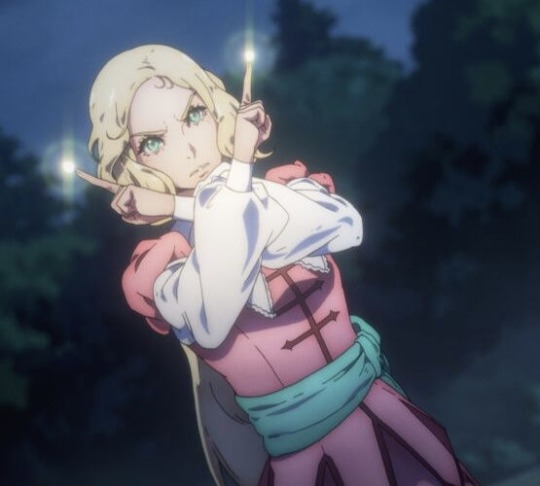
Now let’s remember the games had a five year time skip. The show only needs two years to get Maria to the adult age of 18, but assuming the follow through with the timeline and go for the full five?
Maria will be 21.
21.
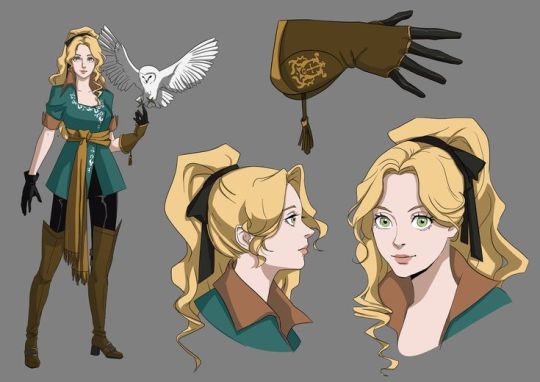
Fan concept for adult Maria. Credit:@esp-art
Are you telling me a 21 year old woman is not old or mature enough to make her own decisions? How is this not a total infantilization of women? Do you think a 21 year old badass vampire hunter needs protection from the ace depressed dhampir boy who just wants to sleep and has in no way tried to pursue her until after she expressed consistent and persistent interest in him?
It is not “grooming” to meet someone when they were younger and then meet them again years later as an adult. That’s a thing that happens! In real life! Adults can still make decisions for themselves! It is only grooming if Alucard behaved in a way that would manipulate teen Maria and put her under his control and authority before she can consent. There is no indication that Alucard in the show is going to do this. And yet the fandom is basically demanding it by saying he should make her “his baby girl”?
And what of Maria’s feelings in all this? She just lost her mother and was betrayed by her father shortly after discovering he even existed. She has lived her whole life without a father. She is in no desperate need of a new one. And if she does need a family member, she already has one! Richter is 19 and is her trusted adoptive brother. Why wouldn’t she go to him over a total stranger she just met and who is half vampire - literally a predator creature that feeds on humans!?

Yeah, hi, Richter Belmont still exists. He and Maria consider each other family. Why would you want her relying on a strange man she just met as a “father figure” rather than her trusted and loving brother?
Have none of you even considered how Maria would feel if Alucard even tried to fill the paternal role? He’d have to force it on her through manipulation and coercion. No way she would want to view him that way. Especially considering she is 16 and likely to be as attracted to the sparkly 20 year old looking sculpted marble beauty as anyone else!
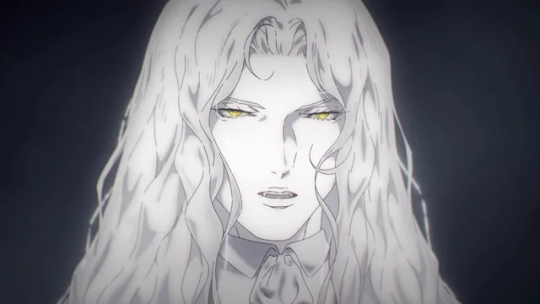
Don’t mind the beautiful eternally young man who looks made of pure porcelain and light. No teen girl has ever been attracted to this, right? No way it could be exploitative and creepy for him to present himself as her new daddy, giving himself authority and influence over her as his child to mold as he wishes, right? Oh yeah, this is MUCH better than Maria pursuing him of her own volition once she becomes an adult, right guys?
We are truly in the stupidest dark timeline.
Frankly, I don’t care if Netflix has them get together or not. They would work just fine as friends too. I just sure as hell hope they’ll ignore the fans clamoring for a creepy daddy/daughter dynamic. Dressing it up as “concern” won’t hide that for some it’s a fetish, and for others they’re just useful idiots who haven’t thought it through.
I implore you to think it through.
257 notes
·
View notes
Text
Top 10 Castlevania Dracula Boss Themes
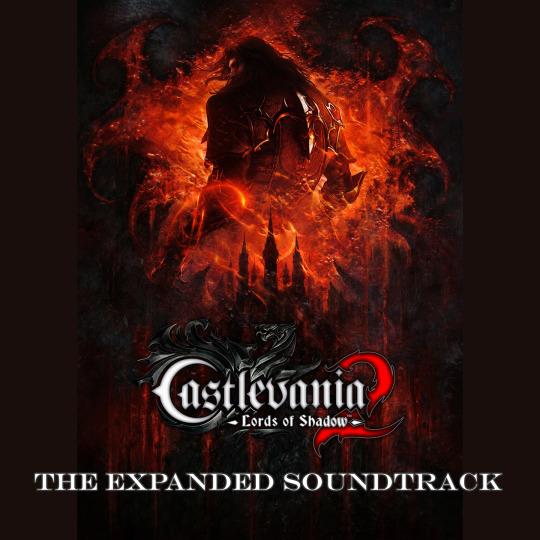
While Bram Stoker’s “Dracula” is most often associated with All Hallow’s Eve, many people don’t realize that the original novel was actually published in May. In fact, World Dracula Day - commemorating the publication of this seminal work of literature - is May 26th, every year. I’ve been on a Dracula kick basically all year now, by this point, due to various things…and I’ve decided, with this in mind, it’s time to give another spotlight on one of my favorite stories and characters. So, I’m declaring this entire month of May to be “Dracula Month!” Throughout this month, I will be uploading various little lists (and, in two cases, re-releasing old countdowns in an updated format) all related in some way to the King of the Vampires. And there’s no better place to start the celebration than with one of my favorite versions of Dracula, from one of my favorite video game franchises: Castlevania.
While Dracula isn’t directly battled in every Castlevania game, his specter looms large across the series. From the Classic games to the “Lords of Shadow” Reboot Trilogy, even if Dracula doesn’t appear as the final boss or main antagonist, he’s ALWAYS present in some form or another. As the main villain of the entire franchise, the Count of Transylvania has rarely been shown as persistent or as powerful as he is in these great games. And of course, with so many boss battles with Dracula in so many games…there must also come a great number of boss themes.
The music of Castlevania is one of its strongest points, and Dracula’s many battle themes are no exception. Some are more well-known or more frequently used than others, but it’s interesting to hear just many different musical stylings and compositions have been attributed to the Prince of Darkness throughout the franchise. So, I’m going to countdown my ten favorite Dracula boss themes from throughout the Castlevania series, just for a lark. I should point out I’m specifically focusing on the games and their boss battles, so you won’t be seeing any music from the (most excellent) animated series here. Also, I am specifically talking about boss themes, so any other pieces of music attributed to Dracula won’t be discussed, at least not in this list. BUT ENOUGH TALK! These are my Top 10 Dracula Boss Themes from Castlevania! HAVE AT THEE!
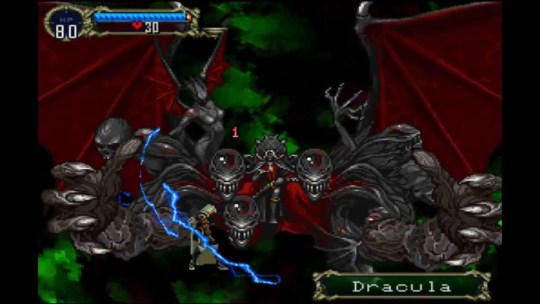
10. Black Banquet, from Symphony of the Night.
Considering “Symphony of the Night” is widely regarded as one of the best Castlevania games ever, if not the best - and with one of the greatest soundtracks of the series to boot - it’s funny that I often feel the final battle with Dracula in the game tends to get overlooked. More people seem to remember the impossible-to-lose Prologue opening battle between Richter and the Count, both musically and in terms of the fight overall. There are lots of reasons why, but while while the final battle with Dracula in “Symphony” may not be his absolute best encounter as a boss, and “Black Banquet” isn’t usually people’s first choice for a great Dracula boss theme, I don’t think this piece of music is bad at all. There’s a low, deep, pumping quality to the music, which really gives a sense of size and dread to this final duel between Alucard and his father. It’s a fittingly eerie sort of theme, tense and low, almost like something from a modern stealth/survival horror title. It may not be the most memorable or the most popular, but it’s far from terrible.
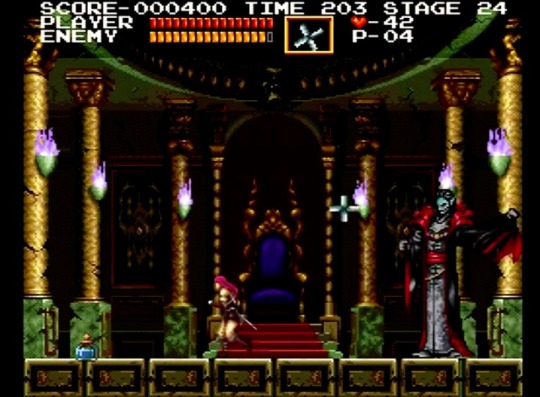
9. Creatures in the Depth, from Castlevania Chronicles.
Yes, for those who don’t know, it’s “Depth” not “Depths.” Don’t ask me why. Anyway, I’m specifically talking about the Arranged version of this theme. A lot of older, more “retro” sounding, “bit-based” music themes tend to be hit or miss from me. I generally prefer things that have a more symphonic or orchestral sort of sound quality. Whichever version you listen to, however, this is a pretty fun theme for Dracula. This tune plays during the first stage of the Count’s boss fight. It’s one of the fastest-paced themes on the list, and has a sort of theatricality to it. There’s a sort of “bouncing off the walls” quality to the piece. The rhythm actually weirdly seems to sync up with Dracula’s frequently teleporting around the arena, almost like a warning sign of when he’s going to pop up next, and gives this final “en-Count-er” a sort of “rock star” quality. My only problem with the theme, and why it ranks so low, is that it’s very short; the soundtrack release has to loop the track at least three times, because the full piece in total is less than a minute. Some of the other themes on this countdown ARE on the short side, mind you, but none of them are THIS brief. Still, short as it is, it’s not bad.
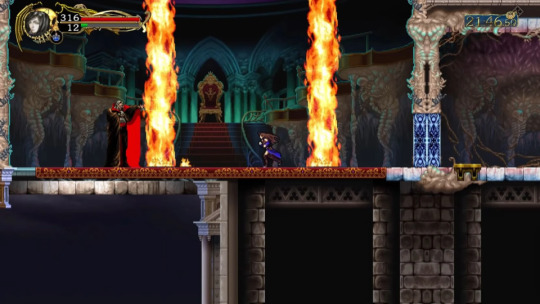
8. Order of the Demon, from Harmony of Despair.
This theme first appeared in the game “Order of Ecclesia,” and while I think it’s fine there…once again, I prefer the more “full” version, in terms of instrumental style and quality, from the game “Harmony of Despair.” In that game, this theme plays during the first two stages of Dracula’s boss fight. (It changes to the tune “Dance of Illusions” in the final stage, which we’ll get to later.) “Harmony of Despair” took several classic themes from throughout the franchise’s history, and reworked them into a sort of symphonic rock or metal style. However, for “Order of the Demon,” they eschewed electric guitars and other such instrumental choices in favor of a more straightforward, orchestral sound, with heavy focus on brass and percussion. Like “Creatures in the Depth,” this is a very wild-sounding theme, with a rapid tempo, and I like it for similar reasons as a result. It’s a bit longer and has more variation to the way it plays with the melody though, which is ultimately what makes it stand out above the previous choice.
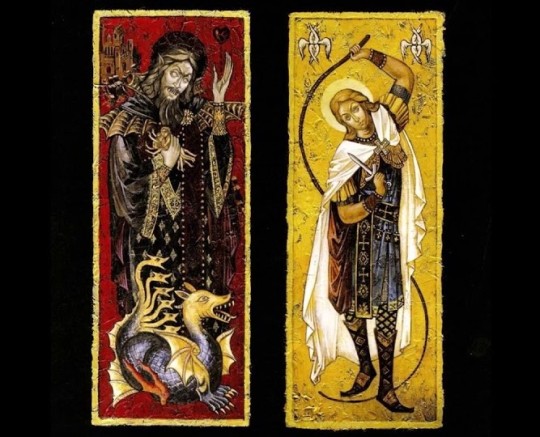
7. The Vampire’s Stomach, from Castlevania X Michiru Yamane: Autobiography Music.
Wow, what a title. If you’re wondering what game that title comes from…it’s not from any game. That’s really the primary reason this one gets a lower ranking, you see: the track itself IS found in a Castlevania game, but this specific ARRANGEMENT is not. Confused? Well, here’s the succinct version of things: Michiru Yamane is a composer who has worked on several Castlevania games, such as “Bloodlines” and the aforementioned “Symphony of the Night.” However (supposedly), she felt a bit disappointed with the way some of the tracks in Bloodlines, in particular, came out: that game came out on the SEGA Genesis, and the musical capabilities of that system weren’t able to live up to Yamane’s fullest desires. A special CD, with the above title, allowed Yamane to create more symphonic-sounding arrangements of some of her themes from Bloodlines that she wished could have been done a bit differently, among them being Dracula’s boss fight from that game, “The Vampire’s Stomach.” The arranged version is five minutes long and is extremely interesting; it would have been great to hear this rendition in an actual game of the series at some point. It still would be! But since it technically never did, and the original “Bloodlines” version, I have to admit, isn’t one I’m ESPECIALLY fond of (if I were ranking just that original take, this track would be at least a little lower in the ranks), I don’t think it’s fair to put it any higher. It still sounds awesome, though…and while the title is a bit odd, I love it, too, for the record.
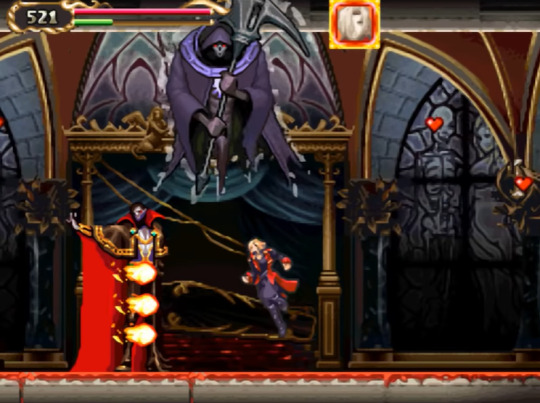
6. Banquet of Madness, from Portrait of Ruin.
This is the theme that accompanies my single favorite boss fight in the entire Castlevania series, which is honestly the main reason it ranks as highly as it does: that’s just good background to help boost any theme, frankly. In this battle, you’re not only fighting Count Dracula, but also the secondary antagonist of the series: his right-hand skeleton, the Grim Reaper himself, Death. You could argue that means this doesn’t count for the list, since it isn’t JUST Dracula being fought…but a.) Dracula is doing most of the work (though Death playing support certainly helps to make this fight all the more challenging and memorable), b.) it follows the typical “formula” of a Dracula battle in these games, and c.) this is my list, so I make the rules. Ha! Anyway, this is another short, rather wild sort of theme, but I think that wild tone fits better here than anywhere else. You have to deal with two enemies during this fight, both of whom are very powerful, and both of whom are constantly on the move, throughout the first stage. When Dracula “absorbs” Death to help himself take on his “true form,” you’d think having just one target would make things easier, but no: the fight only gets even more intense at that point, as Dracula flies around using more devastating and frequent attacks than ever. The phrase “Madness” certainly begets the situation.
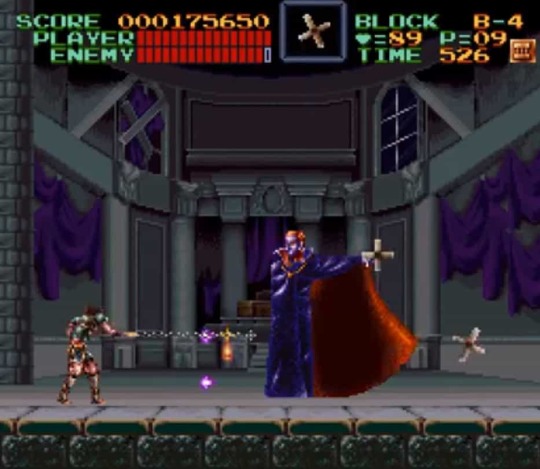
5. Dracula’s Room/Simon Belmont’s Theme, from Super Castlevania IV.
This one (well…really, these two) can be considered truly classic. It’s one of the most iconic and well-liked themes for Dracula battles in the Castlevania library, and I think there are two reasons why: one is the context, the other is the unique tone. Both of which sort of go hand-in-hand. Contextually, throughout the final stage of this game, the music is rocky and strong, very heroic and forward-driving. It rarely lets up the pace and rhythm, urging you to charge forward and make it to the end in this final gauntlet of chaotic evil. But after you defeat Death…suddenly, the music just cuts out, and for a moment there’s silence. Then, “Dracula’s Room” begins to play, as you make your way through the lonely halls towards the Count’s private chambers for the final duel. This theme is haunting, slow, almost sorrowful, with a sort of bitterness to it; it isn’t a grand, sweeping, adrenaline-fueled piece, but something cold and almost ethereal. It’s the sound of two old enemies, both of whom know this is the end, finally coming face to face for one last struggle. It’s a tonal jump from the rest of the stage that catches you off guard and unnerves you, and it makes the battle with Dracula all the more memorable. When Dracula gets down to his last several bars of health, and begins the second stage of his fight, the music changes to the more triumphant-sounding, mighty “Simon Belmont’s Theme,” almost like a pep talk to the player that you’ve almost won, or like Simon finally gaining the upper hand as Dracula grows more desperate. Separate, both themes are great, but when combined, they create a great story told through music. The only reason this DOESN’T rank higher is because, again, I prefer more symphonic/orchestral pieces to the more “retro” sounding music here…but as far as “retro” pieces go, this is one that has really stood the test of time well.
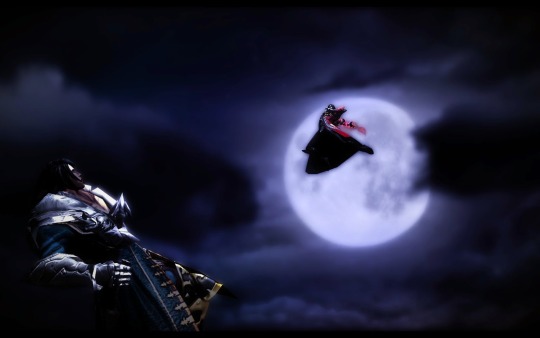
4. Final Fight, from Mirror of Fate.
In direct contrast to the previous choice, this is one that I feel is underrated, and goes in quite the opposite direction. “Mirror of Fate” was one of three games made for the “Lords of Shadow” reboot of the Castlevania games. These three games were an attempt to update and modernize the series, changing up the lore a bit (well…a lot, really) and using gameplay and aesthetic stylings influenced heavily by the “God of War” franchise. Fans of Castlevania are mixed about these creative decisions, but I personally didn’t mind them. While none of the three were perfect, I think they still stand as good games…and of the three, “Mirror of Fate” was my favorite. It was an attempt to combine the classic gameplay style of sidescrolling Castlevania games of yesteryear with the lore and aesthetics of the other “Lords of Shadow” titles. In the other two games, Dracula is actually the main protagonist…but as part of the “return to form” style of “Mirror of Fate,” in this title, Dracula is finally the main villain again. The Lord of the Vampires is fought twice in the game, and both battles use this theme. Fitting with the style of the LoS trilogy, this has a heavy, pounding, rhythmic, “epic” sound to it, with a lot of grit and toughness, but still carries strange of Gothic, almost operatic power typical to the Count as a character. There’s a twinge of bitterness and sadness to this theme, along with a heavy dose of bold horror; not only a result of our main character in other titles now playing the role of the villain, but the tragic circumstances that surround both duels with the Son of the Dragon in this game. It’s not a theme a lot of other Castlevania fans would likely place on their Top 10, let alone so high up, but I think it’s worthy of my own countdown.

3. Nothing to Lose/Black Night, from Super Smash Bros. Ultimate.
“Super Smash” may not ACTUALLY be a Castlevania game, but there’s a Castlevania world, and you CAN fight Dracula in it. You can even play one of the Belmont clan, no less! So I’m still counting it. (Also, technically these themes first showed up in “Harmony of Despair,” I think. So if Smash Bros. doesn’t count, that title DEFINITELY does.) These are actually remixes of Dracula’s boss themes from the very first “Castlevania” game, released all the way back in 1986. Those old themes are as retro as retro gets, and while they have a certain charm, I MUCH prefer these new arrangements, which combine high-flying Gothic strings and choral darkness with a screaming electric guitar and (literal) banging drums. “Nothing to Lose” plays during the first stage of Count Dracula’s battle in the game, while “Black Night” kicks in during the second stage. These were glorious, rocking-good reinventions of arguably the most classic of classic Castlevania Dracula battle themes; returning the series to its roots and revving things up to a hundred at the same time. While they did originate in “Harmony of Despair,” like I said, I will always remember them and appreciate them best for their use in Super Smash Bros. Ultimate, as they really helped to create the “Castlevania Package” for the game, so to speak.
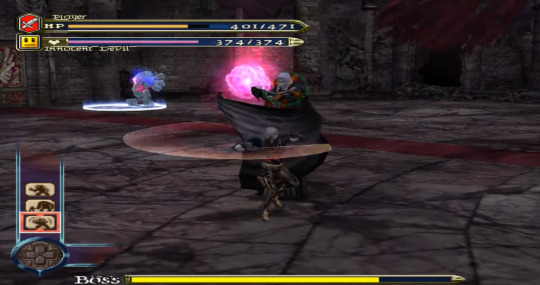
2. Toccata Into Blood-Soaked Darkness, from Curse of Darkness.
“Curse of Darkness” has one of my favorite soundtracks in the Castlevania franchise, if not my favorite, so it stands to reason Dracula would have a great theme here. Much like with “Creatures in the Depth,” this tune plays during the first stage of Dracula’s boss battle, and far outshines the theme that follows it. Alongside “Dracula’s Room” and our number one pick (still to come), this seems to be considered one of Dracula’s absolute “signature” themes. It’s one a lot of people name as one of their favorites, if not their favorite, and for good reason. This theme is absolutely DRENCHED in Gothic power and decadent gloom. The virtuosic organ leitmotif that runs throughout gives the theme a sense of grandeur, while also driving it onward with its remarkable speed. The music starts out as a slight slow burn, with lower, darker, colder tones under the surface, which eventually crescendo, as the music grows wilder and more intense, matching the rising intensity of the fight itself. You hear this theme, and you just think “Dracula.” Plain and simple.

1. Dance of Illusions, from Dracula X Chronicles.
Also sometimes titled “Illusionary Dance,” I guess depending on translation. While the Toccata is a theme where you hear it and just think “Dracula,” this theme is one I hear and specifically, automatically think “Castlevania’s Dracula,” as well as, indeed, Castlevania in general. While this whole list has proven that the Count has had many unique variations on his boss music over the course of the franchise, “Dance of Illusions” is the track most recognized as Dracula’s “official” theme in the series. Originating in the game “Rondo of Blood,” this theme has since shown up in numerous Castlevania games as Dracula’s boss theme for at least one stage of his fight, if not the entire battle as a whole. This theme combines the Gothic darkness and power of the Toccata with the sort of swooping, theatrical sound that themes like “Creatures in the Depth” and “Banquet of Madness” have. When I hear this theme, it’s impossible for me to NOT imagine Dracula in his usual attack mode for the series, swirling his cape and laughing tauntingly as he uses his magic to combat the player. I knew this theme would be my number one from the start, and revisiting it did not change my mind…the hard part was figuring out which arrangement I would use. Some versions of this tune I considered include the ones from “Symphony of the Night,” “Legacy of Darkness,” and the recent homage “Dead Cells: Return to Castlevania.” Ultimately, however, I decided my favorite arrangement is from “Dracula X Chronicles,” which was - coincidentally - a remake of the original game this came from, “Rondo of Blood.” It’s the most dramatic, the most intense, and accompanies my single favorite solo battle with the Count (my second favorite Dracula boss after “Portrait of Ruin,” overall) in the entire franchise. While it is admittedly on the short side, clocking in at about a minute-and-a-half before looping, it makes FULL use of the length it has, and is therefore my favorite interpretation of the theme I best recognize as Dracula’s theme within this franchise. Therefore, it is more than deserving of recognition as number one on this countdown. Case dismissed.
HONORABLE MENTIONS INCLUDE…
The Devil’s Revival, from The Adventure ReBirth. (Very retro theme, and a fun one. ‘Nuff said.)
Metamorphosis to the Black Abyss of Death, from Curse of Darkness. (I liked the first battle’s theme more, but this one is good, too.)
You Goddamned Bathead, from Castlevania Chronicles. (Best. Title. Ever. XD Again, like with Curse of Darkness, just liked the first theme more.)
The Darkness That Chills Men’s Hearts, from Castlevania: Lords of Shadow 2. (Wasn’t sure if this one should count, since the battle is against a creature called “Inner Dracula” and the player’s character is Dracula himself. However, for that same exact reason, it seemed like it should at least be an Honorable Mention.)
#list#countdown#favorites#best#castlevania#dracula#boss battles#boss themes#music#video games#video game music#top 10#dracula month
6 notes
·
View notes
Text
10 Characters, 10 Fandoms, 10 Tags
If you read this and you feel like participating, consider yourself tagged. :)
I’m not sure I’ll be able to hit 10 different fandoms, but here I go!
1) Zevran Arainai from Dragon Age Origins. Favorite of favorites and my stabby sweetheart! I’m a total sucker for the Finding Love Again type of tropes.
2) Astarion from Baldurs Gate 3. I am shameless in my love of “troubled companions.” Also, I have a voice kink, apparently.
3) Daeran Arendae from Pathfinder Wrath of the Righteous. Is he a bastard? Yes. Do I love him to bits? Also yes. Completing his final quest was especially satisfying.
4) Alucard from Castlevania, specifically from the Netflix show, but I’ve also enjoyed playing him in Symphony of the Night.
5) Lann from Pathfinder Wrath of the Righteous. Half lizard, half man, all snark. I like seeing him be softer around a Commander who romances him.
6) Muriel from The Arcana. I love, love, love seeing him open up to the Apprentice who romances him.
7) Felix/Farah Hauville from The Wayhaven Chronicles. Happy bubbly vampire guy/gal. A genuine delight and breath of fresh air after all the angst of another romance that left me grumpy.
8) Cullen Rutherford from Dragon Age Inquisition. I’m all about healing arcs and seeing characters who screwed up or realized they were in the wrong trying to change and improve themselves. Plus he’s so damned soft around the Inquisitor that woos him.
9) Isabela from Dragon Age II. I utterly adore her and would totally steal a ship for her if she asked.
10) Josephine Montilyet from Dragon Age Inquisition. Kind, intelligent, AND Antivan? Yes, please!
#dragon age#pathfinder wrath of the righteous#the arcana#the wayhaven chronicles#castlevania#baldurs gate 3#fandom#hope the tags don't annoy anyone I like what I like
6 notes
·
View notes
Note
for tht ask game, symphony of the night, or if thats taken, metal gear
AH GETTING TO THIS NOW<3
favorite male Definitely Butch character: richter : )
favorite female character: well maria : ) i just wish she was better in the original dub.. its my favorite in terms of acting but she is not very well written in comparison to alucard and richter maybe even drac
least favorite character: shaft is a fuckin snake but i think the succubus was treated the worst
prettiest character: when it comes to who is specifically most pretty definitely alucard.
funniest character: i want to just say Literally Richter but that would come off differently from how i truly feel. the ferryman
favorite season stage: THE COLOSSEUM- im gonna just blast off for a second the way that the stone dragon heads in the background have glowing red eyes that pulsate to the beat of the ost as well as the tranquil bath room and the disturbing gore room with the blood cloak which turns pain into power and also the stone throne with a deep blue ornament from where richter laughs at alucard. i wish i could even get into how much this stage means to me in real life
favorite episode cutscene: the mid-boss battle scene before richter uses hydro storm ("Magnificent! But now feel my unbridled wrath!") is literally the climax of the game, however the end boss battle with alucard is so so so important, and so is the succubus nightmare, and so is "open hells gate" and so is "this castle is a creature of chaos, it may take many incarnations" and so is-
favorite romantic ship: dang, if only annette were in sotn..... i even want to say succurichter more than alurichter
favorite family ship: maria and richter, she knows richter would never truly want to hurt anyone!!!!!!
favorite friend ship: alurichter but Mostly for the potential it has not neccesarily what is within the game.. when it comes to that, alucard and maria!!!! their friendship is .. i want to say underrated, but i mostly just dont hear about it a lot outside of alumaria or the radio drama
worst ship: alumaria isnt the worst thing in the world but more popular than im comfortable with. or, to pull from the Very depths of hell, richter/shaft
3 notes
·
View notes
Text
Psycho Analysis: Count Dracula
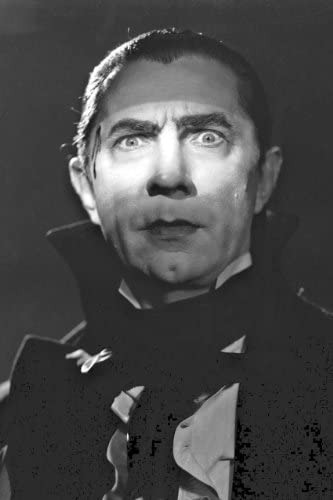
(WARNING! This analysis contains SPOILERS!)
So, in all my time doing Psycho Analysis, there have been a few villainous characters that, while extremely obvious, have such large and daunting scopes that it seems a bit scary to think I could accurately analyze them. Characters like Disney’s Pete or Bowser come to mind. Both are obvious 11s, but where to even begin with them? And that is a similar problem I faced with the villain who is arguably the single most important foe to ever grace fiction: Count Dracula.
How on Earth is one supposed to talk about a character who has spanned so much media and has remained an enduring fixture of pop culture for over a century? The guy has been in movies, comics, books, video games, plays, cartoons, musicals, songs… and he hasn’t even been a villain in all of them! How does one talk about such a villain with such a broad, all-encompassing scope?
The obvious answer is, of course, to talk about him in a broad sense and how he has affected culture, of course! This one’s going to be a little different than usual since I’m focusing more on the concept of Dracula than one single version, so there’s a lot of Dracula’s to go over here:
Performance: Throughout the years, Dracula has had many actors take a shot at him, though I think the finest takes are courtesy of Bela Lugosi and Christopher Lee. The former is basically what cemented Dracula as a sexy, Gothic horror icon, changing the far less attractive man from the book into a seductive monster that would color numerous adaptations after. Lee’s take brings the sexy, but is also far more violent and monstrous, mostly because Hammer horror films were all about that bright red blood, so gotta have someone spill it all!

If you’re looking for more flamboyant, hammy Draculas, Richard Roxbourg of Van Helsing and Duncan Regehr of The Monster Squad have you covered, playing Dracula at his most deliciously, monstrously evil. However, the hammiest (and thus most amazing) Dracula was Michael Guinn’s take in Symphony of the Night, with the entire opening exchange between him and Richter Belmont being a testament to the joys of chewing the scenery.

More comedic takes on Dracula have popped up over the years, with the most notable ones being Adam Sandler’s lovable, fatherly take on the character in the Hotel Transylvania films and Phil LaMarr’s performance on Billy and Mandy, where he plays a ridiculous, possibly senile version of Dracula who is abrasive and hilarious in equal measure.

Basically, when it comes to Dracula, you can easily find any sort of performance to suit your needs and give you what you’re looking for.
Best Scene: Over the years, Dracula has had a great many fantastic moments under his belt, so many fantastic scenes and boss battles… but for my money, the single greatest moment Dracula has ever been in is the opening battle of Symphony of the Night. Just watch this cheesy melodrama unfold and try and disagree with me:
youtube
Though, of course, his death in the animated series sure is a contender:
youtube
Best Quote: From the above scene, we have “What is a man? A miserable little pile of secrets!” among moany other meme-worthy bits of dialogue from Dracula.
On the subject of Castlevania, from the TV show we have Dracula at his most tragic and pitiable, especially when he delivers these fantastically tragic lines like “ It's your room... My boy... I'm- I'm killing my boy... Lisa... I'm killing our boy. We painted this room. We... made these toys. It's our boy, Lisa... your greatest gift to me... and I'm killing him. I must already be dead.” and “Your greatest gift to me... and I'm killing him." as he does battle with his son, Alucard.
Then of course, we have the legendary moment from The Monster Squad where Dracula drops any pretense and starts strangling a little girl, screaming in her face "Give me the amulet, you bitch!" It’s so deliciously, horrendously evil!
Final Thoughts & Score: It’s very strange to think of how much all of fiction owes Dracula. The original book invented a lot of traits (the lack of reflection being one) and popularized others (such as shapeshifting and weakness to garlic), but at the same time also predates a lot of things modern vampire fiction takes for granted. The Dracula of the book has no weakness to sunlight and gets younger as he drinks blood, starting as an old man; in fact, Dracula in the book is entirely lacking in the Gothic sex appeal that almost every adaptation of the character after would give him. He was also not very seductive, instead outright attacking women if he wasn’t hypnotizing them. Hell, he wasn’t even explicitly Vlad the Impaler in the books!
More than any other villain I’ve covered so far, Dracula is truly deserving of an 11/10. Even Count Orlok owes him a debt, seeing as Nosferatu was just a blatant ripoff. Hell, aside from villains from old mythology, I don’t think any villain can lay claim to the sort of scope Dracula has, having forever altered vampire fiction even as certain elements of him become lost in translation.
But what of some of his other incarnations over the years? How do they fare in terms of score? Well, I’m certainly not going to be incredibly thorough and list every Dracula ever, but here are a few I’ve encountered:
Obviously it’s unfair to give the Bela Lugosi incarnation anything less than an 11/10, mainly because this is the Dracula who pretty much inspired most other interpretations of Dracula after him. He’s suave, Gothic, attractive in that dark and mysterious way… it’s no wonder Lugosi’s Dracula became such an iconic fixture of cinema. Then we have the other classic Dracula, Christopher Lee’s take. I think he’s only a 10/10 because I feel like Lee’s tenure is a bit more overlooked and Lugosi tends to supplant him in terms of iconic status.
Castlevania as a franchise is specifically built qround defeating Dracula as the heroic Belmont clan or some adjacent vampire hunter. So you’d better hope that the big bad and master of the magical castle the game takes place in is impressive, right? Well he most certainly is; while he’s not completely fleshed out in every appearance he has some, like his iconic portrayal in Symphony of the Night, really help sell the idea this incarnation of Dracula is a rather tragic villain, though at other times in the series he seems to revel in being a monster far more than that interpretation would allow. Notably, the Castlevania show went with the more tragic approach to great effect, with Graham McTavish delivering a fantastic performance that swings from being genuinely terrifying to hauntingly emotional (just watch the scene where he breaks down upon fighting Alucard and realizing he’s killing his own son). Both game (in a broad sense) and show Dracula get a 10/10, for different reasons.

Duncan Regehr portrayed the Dracula in The Monster Squad, and it is quite obvious he’s having a hell of a time. He’s just wonderfully hammy, and he might be one of the most evil Draculas ever seeing how he called a little girl a bitch and tried to slaughter children with dynamite. This one’s a 9/10 for sure. I honestly think he’s the best take on the character, but his movie is sadly too obscure to really give him that push to being a truly iconic portrayal. He just captures the menace and charisma of Dracula so well, it’s a shame more people don’t know about him.

Van Helsing had a Dracula, played to hammy perfection by Richard Roxburgh. Say what you will about the rest of the film, but any Dracula movie that features evil bat monster Dracula fighting fallen angel werewolf Hugh Jackman in a battle to the death over Frankenstein’s atomic heart is worth at least an 8/10. For a more minor role, we have the Dracula who appeared in the blaxploitation classic Blacula. While he only appears for a bit at the start, long enough to curse an African prince with vampirism and dub him “Blacula,” this Dracula firmly cements himself as one of the most evil Draculas ever, gleefully participating in the slave trade. I believe that’s another 8/10 right there. On a related note, Blacula serves as a chief inspiration to the Billy and Mandy incarnation of Dracula, who is a cranky old black man with a big mustache and lots of sass (in fact, he’s accidentally closer to the original book’s depiction than most other Draculas). Sadly, as a more neutral chaotic comedic figure, I can’t give him a rating, but boy is he a riot.

Scooby-Doo and the Reluctant Werewolf features a more comedic and zany Dracula, one who participates in some good-old-fashioned Wacky Races cheating in an attempt to keep Shaggy as a werewolf forever. He’s mostly amusing for a oneshot villain, so I’d say 7/10 is fair. Speaking of oneshot villains, Dracula also showed up in an animated straight to video movie for The Batman, where he did things such as turn Joker into a vampire and get killed by Batman. He’s probably a 7/10 as well.

And then there are all the heroic takes on Dracula, such as the version from Dracula Untold or the “overbearing but endearing father” take on the character from the Hotel Transylvania movies (though that rap Adam Sandler does at the end of the first movie is pretty heinous).
youtube
And this is not an extensive list by any means. There are so many Draculas I haven’t watched yet, so many different takes I haven’t read the adventures of. And that, I think, is what makes Dracula such a great villain. He is a character who any writer can bend and shape to fit a plot, a villain who can serve almost any purpose and who can fit in almost any fantasy story imaginable. Dracula is incredibly versatile, and whenever he shows up in a work, things almost always get better for a bit. And keep in mind, this is a character who has been around since the year 1897, and yet he is still a household name that even people who have never read the books or seen the movies can accurately describe and recognize.
Is Count Dracula the greatest villain in all of human history? It’s debatable for sure, but I don’t think there’s any denying he’s up there considering his scope and influence and how he helped mold modern vampire fiction into what it is today. If nothing else, Dracula is still wildly influential.
#Psycho Analysis#Dracula#Count Dracula#The Monster Squad#Bram Stoker#Van Helsing#Hammer#Christopher Lee#Bela Lugosi#Adam Sandler#Hotel Transylvania
17 notes
·
View notes
Text
October 2020 Devil May Cry News Updates
Someone mentioned in September’s news updates about how they don’t like visiting Deviantart due to what’s happened to it. So here’s the full list and links I’ll be sharing here that I’ve shared in the Deviantart journal so you don’t have to visit there.

Hey, how's it going? Hope everyone had a fun and safe Halloween. Here are this month's Devil May Cry related updates:
1. Asmus Toys has announced a devil Dante Qbitz figure up for preorder.
2. More promo images of Lady for the Pinnacle of Combat mobile game.
3. Rumours of a Devil May Cry 6 in the works are already surfacing.
4. Devil May Cry V getting a SSS pack, which contains a soundtrack, tshirt, and poster.
b) Speaking of which, they haven't forgotten about releasing an official Vergil coat.
c) Famitsu Interview regarding what may or may not happen in Special Edition.
d) Other inclusions and exclusions of Special Edition regarding features, the official Vergil DLC release date, etc.
5. CapCom at one point released stamps to celebrate the 5th anniversary of the 1st Devil May Cry game. Someone got their hands on them.
6. 90 Day Fiance, featuring Dante from the Devil May Cry series.
7. Interview of Kyo (aka RedgraveKyo) talking to the voice of Trish from DMC4, Danielle Burgio.
8. Some drama regarding how "casuals" and "elitists" react to different opinions of Devil May Cry 4 and V.
My Thoughts On These Updates:
1. That Qbitz figure's adorable. A friend of mine in my one Facebook group mentioned about how Asmus Toys announces all of these Qbitz figures, but no mention about a release date, which is frustrating.
2. As I mentioned in the previous roundup of updates, Yunchang Games really loves showing off more promo work than their actual work. They are nice images, but they could at least give small tidbits of updates about what's happening with this game. Last I heard, it is supposed to be fully released some time this year. Well, we still have another couple months before the year ends. The other thing I heard for why it's getting delayed again is because of the pandemic, and they're actually listening to feedback from their beta testers so they're fixing whatever they can to please the fans.
3. I'm not surprised that rumours about a Devil May Cry 6 is already in the works. Especially when this rumour is coming from DuskGolemn (aka AestheticGamer1). Sure that person has some history with CapCom, but it doesn't mean whatever comes out of this person's statuses are always 100% true. It's plausible since Devil May Cry V did so well with their sales and such, but I'm gonna be cautiously optimistic about this info given.
4. I feel like for CapCom's SSS pack, they should include a Vergil figure from Prime1Studio or Kotobukiya. Sure a soundtrack, tshirt, and poster are nice, but I feel like there should be more.
b) Nice that they haven't forgotten about Vergil's official coat being available for purchase. Sucks that these official coats/jackets are so damn expensive. They're way more than a used or new car for crying out-loud.
c & d) Sucks that we PS4, PC, and XboxONE players have to wait longer for the Vergil DLC, but better to be late than never. It's also too bad about Xbox Series S players, but I guess some technology does have their limits. I'm very curious as to what Special Edition has in store. I like how CapCom's not giving away too much info to make up for the mistakes they've made of releasing major spoilers in their trailers for the original game and DMC4.
5. I think I've heard about those stamps before. It's cool that CapCom does things like that. Japan gets really awesome gaming merch stuff...Even their advertisements are more entertaining than us westerners'.
6. Funny how a little tidbit of someone cosplaying as Dante pops up in a TV show. Wonder what was happening down there in San Diego with that guy?
7. I haven't checked out the interview, but it's cool how specific fans can interact with these voice actors to get some more details and such. If any of you watched it, and anything sticks out that seems interesting, don't be afraid to share your thoughts.
8. (Warning: Very long rant, brutal honesty, and swearing ahead)...It really sucks what's happening with the Devil May Cry fandom as of late...More people have been leaving the fandom because someone was trying to be "funny". I'm aware that these kinds of things also happen with other fandoms like Undertale, Bayonetta, etc. for these kinds of drama to occur. I'm just sick of people shitting on one another...
Yes, there is good that happens in this fandom as well like fundraisers for good causes, fans supporting other fans, even chill folk that don't like to start drama (Like that wholesome status post I shared in the list of updates for example).
My problem is how people are either living under a rock, or are being in denial with the problems that surface with this fandom. Let alone being hypocritical where they share an opinion regarding another opinion that they disagree with in a rude manner, then turn around and share something more positively eye-opening that's not so rude so they cover their tracks with their mistakes they've made before (Not sure if I worded this properly. Hope you get what I mean. One example is how one of the "elitists" mentioned about how "casual fans" are the most toxic people he's come across. Meanwhile he's complaining and whining in a toxic manner about PC players not getting Special Edition, then he turns around and shares that wholesome post about DMC4 players vs fans to make himself look good).
I just want everybody to keep the peace with one another instead of being entitled, egotistical, self-centered, spoiled-rotten, hypocritical, idiots.
The other issue this fandom is facing is content thieves. They've been on the rise for quite some time now, and people aren't doing a damn thing. I've been fighting with a few Facebook groups regarding this kind of act, but all they want is clout...Which is ridiculous if you ask me...I ask that if any of you see fan artists', screen captors', meme and mod creators', and cosplayers' content being posted where they state on their images or profiles that they don't want their content shared, or need permission to ask about their content being shared, message these artists or report the images. Even say something to these content thieves. As an artist who's had my stuff stolen before, I don't condone content theft...
For those of you who know me in my Original Devil May Cry Sanctuary group on Facebook, and The Red Devil's Chronicles page on there as well, I always credit the content creators for their work, but I am also cautious on who wants their stuff posted or not. And as of late, I've pretty much stopped sharing others' fan art to respect these artists' wishes of not wanting their content shared without permission. If any of you want your stuff shared on the Facebook page, don't be afraid to let me know on here or there, I will give credit. I've been debating about whether to completely delete the fan art album on there and start anew. What do you guys think?
As I've said, not all things are bad in the Devil May Cry fandom. We do have the good side of it, too. I'm hoping it gets better regarding that good side of it. It really sucks having to see stuff like this happen. But we good fans can change things for the better if we do something. This may come off as nerdy or cheesy, but as Alucard from Castlevania states in Symphony of The Night, "The only way for evil to triumph is for good men to do nothing".
2 notes
·
View notes
Text
Running Castlevania with Old School D&D, Part 5
This is part of a continuing series. For part one, click here. For part two, click here. For part three, click here. And for part four, click here.
While the previous posts in this series have mainly been concerned with showing how to adapt Lamentations of the Flame Princess' various character classes to Castlevania-appropriate archetypes, this post will handle the setting of Transylvania itself. And while I dipped into Castlevania III: Dracula's Curse and Symphony of the Night to build a D&D style adventuring party with, neither game really offers much in the way of setting material outside the castle.
For that, I'm going to go back a little farther into the franchise's history, to the much-maligned proto-Metroidvania, Castlevania II: Simon's Quest.
Please, hold all torches and pitchforks until the end.
Just a brief side note: If I really were to run a Castlevania-themed campaign for a group of PC's, I'd probably lean heavily on Simon's Quest to do it with. While the 8-bit NES wasn't quite up to the developers' ambitions, the game has some good bones to build off of.
I would probably have the players roll up original characters, with at least one being the next heir to the Belmont line. I'd have the game take place a few years after one of the "major" Dracula battles outlined in the main series, and have the Belmont player character's relative be suffering from the same curse Simon did: The wounds taken in his battle against Dracula are not healing. He is slowly dying. As his condition worsens, he has visions of becoming a creature of the night. A fortune-teller reveals the truth. If he dies before the next full moon, he will become a vessel for Dracula to be re-born, stronger than ever. The only way to lift the curse is to bring Dracula's spirit back into its previous body. But Dracula's minions have scattered his remains, to ensure that his curse will run its course.
Honestly, the only major difference in the set-up would be that the "cursed" Belmont wouldn't be accompanying the PCs. I'd hole him up in the basement of a church, surrounded by garlic and crosses, with monks praying over him day and night. It would then be up to the group of relatively green and inexperienced adventurers to run a desperate race against the clock, with only minimal guidance from their mentor.
(I'd also make sure that the enemy kidnapped the cursed Belmont as the night of the full moon approached, giving the PC's one more thing to worry about. But that's just me...)
Anyway, there are a few resources I'd recommend using here. First and foremost is A Guide to Transylvania, which I mentioned back in my Alucard post. The PDF is available on DriveThruRPG for about eight bucks. The crunch inside is AD&D 2e specific, but everything else is system agnostic. This book details everything from Transylvanian history, to peasant superstitions, to secret societies. No other supplement will help you fill in the details of the Transylvanian countryside as well as this one.
The second (more expensive) resource is the current D&D 5e Curse of Strahd campaign book, which is an update and expansion of the original Ravenloft module. Why this one instead of the (many) older ones? First, it's widely available in hardcopy. And while I'm not completely in love with what I've seen of 5e's rules, you just can't deny that Wizards of the Coast puts out a high quality product these days. This thing will survive some wear and tear at the table. Second (and more importantly), it maps out and expands the land of Barovia far beyond what the older editions did.
The third (completely free) resource is the Transylvania map that appeared in the old NES Game Atlas. A high-quality scan is available here at castlevaniadungeon.net.
The simplest, easiest way to take care of mapping the Transylvania countryside is just to use the foldout map that comes with Curse of Strahd and swap out the names. For example, swap out the starting village of Jova from Simon's Quest with the Village of Barovia from Curse of Strahd. Swap out Yomi—the nearly-abandoned town just outside Castlevania—with the destroyed village of Berez.
While this won't be 100% faithful to the geography on the Castlevania map, enough of the landmarks in Simon's Quest have a rough Barovian equivalent to make it work. Below are some suggestions, with corresponding map and page references.
Castlevania Location / Barovia Location / Curse of Strahd Foldout Map Location / Curse of Strahd Page Reference
Town of Jova (Area 1) / Village of Barovia / Location E / Page 40 - 48
Town of Aljiba (Area 16) / Village of Valliki / Location N / Page 95 - 124
Yuba Lake (Area 14) / Lake Zarovich / Location L / Page 38
Town of Veros (Area 6) / Village of Krezk / Location S / Page 143 - 156
Town of Yomi (Area 48) / Ruins of Berez / Location U / Page 161 - 166
Laruba Mansion (Area 36) / Wachterhaus / N/A (Located in Vallaki) / Page 110 - 115
Brahm Mansion (Area 21) / Argynvostholt / Location Q / Page 129 - 142
That should be enough to get the idea. That said, I'd probably also swap out some of the obviously non-European names with some real-world Transylvanian ones. Targoviste for Aljiba, for example.
One pro to this approach is that it requires relatively little prep time, especially for an inexperienced DM. Curse of Strahd has plenty of fleshed-out NPCs, side-quests, and description boxes for just about every building and room, if you decide to use them. You can use the encounters, too. Stat conversions from 5e to LotFP are simple: Just use the closest equivalent monster from the free Basic Fantasy Roleplaying Game, and add two to the creature's Armor Class. Don't sweat the other details.
Me? I probably wouldn't go that far. I'd probably just use the maps, crib or ad-lib all of the descriptions from the Transylvania Guide, and wing it with the NPCs and encounters. Similarities aside, Castlevania and Ravenloft are two different properties, with two entirely different feels to them. Relying too heavily on the published material just means you're playing Curse of Strahd. Which is okay. But it isn't Castlevania.
Which, of course, leaves open the question of Castlevania itself.
The Castle Ravenloft layout in Curse of Strahd is unchanged from the original I:6 Ravenloft module. It makes a perfectly serviceable stand-in for Dracula's Castle, provided you're taking your inspiration from the first couple of games. But if you want something closer to the sprawling, changing, living embodiment of Chaos featured in Symphony of the Night and most of the later games, you'd be better off creating your own funhouse-style Mega-dungeon. As with anything, which you choose will depend heavily on your group, their preferences, and their play style.
Before I close this installment out—and since I'm already mining Castlevania II for ideas—I'm going to give some sample stats for that game's two Boss monsters. For Carmilla, I used the Basic Fantasy Roleplaying Game version of the Vampire, with almost no modifications. For Death, I re-skinned the BFRPG Lich, added a bunch of Hit Dice, and swapped out his spell casting for a handful of specific, spell-like abilities.
If neither one seems challenging enough, both are easy enough to scale up in power. After all, when it comes to "end game" content, you're bound to have a pretty high level party. Watching them effortlessly steamroll the final bosses would be sort of anticlimactic. If that's a concern, my personal preference is to creatively choose the location for the encounter.
Instead of meeting Carmilla in her vampire lair right away, why not have the PC's encounter her at a masquerade ball, using the powers of her enchanted mask to appear as one of the living? Force them to use roleplaying and guile to maneuver her to a place they can fight her without harming innocents. What about having the PC's run into Death on the grounds of an old battlefield or cemetery? He could raise dozens of allies among the dead, forcing even the most powerful group of PCs into a pitched battle for survival.
Granted, if you're planning to use Castlevania II as your template, you could always just let the PC's walk right by them with no consequence...
(Note: the Lamentations of the Flame Princess rules assume ascending armor class and a base, unarmored AC of 12. If using these creatures with a system that has a base AC of 10, simply subtract 2.)
CARMILLA
Alignment: Chaotic
Armor Class: 21
Hit Dice: 9 (attack bonus +8)
No. of Attacks: 1 weapon or special
Damage: 1d8, or by weapon, or special
Movement: 40' or 60' (fly)
No. Appearing: 1 (Unique)
Save as: Lvl 9 Fighter
Morale: 11
Treasure Type: Special
XP: 1,225
Beautiful, vain, and cruel, the aristocratic vampire Carmilla is one of Dracula's most ambitious servants. Famous for her inventive and sadistic tortures, she is best known for bathing in the blood of young women. She possesses Carmilla's Mask, a powerful, cursed artifact.
Like all vampires, Carmilla casts no shadow and no reflection. She cannot cross running water, and may not enter another's home unless invited. She cannot tolerate the strong odor of garlic, and will recoil from a mirror or from a cross presented with conviction (for more information on these weaknesses, see the Vampire, p. 124 of the Basic Fantasy Roleplaying Game).
Carmilla is immune to Sleep, Charm, and Hold spells. If unarmed, she will treat her hands like claws, raking her target for 1d8 damage. When armed, her vampiric strength gives her an additional +3 to damage when using melee weapons. Her bite (though seldom used in combat) inflicts 1d3 damage, and drains one level of energy from her target for each round she continues to feed. Feeding places her in a vulnerable position, and she suffers a -5 to her Armor Class.
Victims reduced to 0 hit points by Carmilla's feeding die, and they will rise as vampires during the next sunset. These new vampires are permanently under Carmilla's control, and always act as if under a Charm spell.
Carmilla can command common nocturnal creatures. Once per day, she can summon 10d10 rats, 5d4 giant rats, 10d10 bats, 3d6 giant bats, or 3d6 wolves. The creatures must be nearby to be summoned. Once called, they arrive in 2d6 rounds and obey her commands for 1 hour. If she chooses, Carmilla can also assume the form of a giant bat or a giant wolf at will.
In addition to the above abilities, Carmilla also shares the common vampire's Charm gaze, which her victims can save vs Spell to resist. Unlike her more common brethren, Carmilla's charm is exceptionally powerful, imposing a -3 penalty rather than the standard -2.
Carmilla cannot be harmed by non-magical weapons. Exposing her to direct sunlight for more than 1 round destroys her, and submerging her in running water causes her to lose 1/3 of her Hit Points per round for three rounds, with death occurring on the third round. Any other method of reducing her HP to 0 merely incapacitates her, causing her to fall into an apparently death-like state. But if her body is not exposed to sunlight, submerged in running water, or burned, she will begin to regenerate 1d8 hours later, at a rate of 1 hp per turn.
Carmilla's Mask (Artifact)
This artifact is a smooth, silver mask, closely resembling the kind commonly worn during masquerade balls. When the mask is placed onto a human or a dhampir, dozens of hollow, silver spikes appear in the inside, causing it to latch onto the victim's face, and inflicting 1d3 damage. Each round the victim is prevented from removing the mask, it drains 1 energy level, feeding as a vampire, until the victim is reduced to 0 Hit Points. Once dead, the victims do not rise as vampires.
If the mask is freshly fed, bloody tears will pool in the corner of its eyes, and for the next 1d12 hours it will convey several abilities on any vampire that wears it. While wearing the mask, the vampire casts both a shadow and a reflection. Garlic, holy symbols, and holy water have no effect. The vampire may enter any home with no invitation, cross running water, and even walk in the sunlight—although this last will still be uncomfortable.
Additionally, victims of the vampire's Charm gaze suffer a further -2 penalty to their saving throw.
DEATH
Alignment: Chaotic
Armor Class: 26
Hit Dice: 15 (attack bonus +10)
No. of Attacks: 1 touch, weapon.
Damage: 1d8 touch+drain, by weapon.
Movement: 30' or 60' (fly)
No. Appearing: 1 (Unique)
Save as: Lvl 15 Magic User or Cleric (use lower)
Morale: 11
Treasure Type: Special
XP: 3,150
Death is Dracula's top lieutenant. Fiercely loyal to his master, Death will fight to protect him at all costs. Death's actual nature is unknown, although he is believed to be an evil manifestation of pure Chaos. His physical form resembles that of the classical "Grim Reaper," a skeletal body wrapped in a tattered cloak. He carries Death's Scythe, an artifact-level magical weapon.
Upon first encountering Death, all intelligent, living creatures must save vs Spell or flee in terror for 2d6 rounds. Even on subsequent encounters, Death's gaze is terrifying. All creatures that meet it must make a save vs. Spell or be paralyzed with fright for 2d4 rounds. Dhampirs, due to their half-undead nature, get a +2 bonus to this check.
Death prefers to attack with his scythe when possible. If forced to make a physical attack, his touch causes 1d8 points of damage and drains 1d4 points of Constitution, while simultaneously healing him for the equivalent amount.
The Constitution loss is permanent. It can only be healed by the casting of a Restoration spell, at a rate of 1 point per casting. If a character's Constitution score falls to 0, he or she immediately dies, and rises the following round as a lesser wight. This creature is identical to the wight described on p. 126 of the Basic Fantasy Roleplaying Game, except its attack causes 1d4 points of damage and 1 point of Constitution loss. All characters killed and transformed into wights are considered permanently dead, and cannot be Raised. They may still be Reincarnated.
Death is able to cast Speak With Dead, Animate Dead, and Raise Dead at will. And while he rarely feels the need to disguise himself, he is able to do so with the aid of Polymorph Self. Additionally, Death is always treated as having an active True Seeing spell cast on his person. For purposes of spell duration and saving throws, Death's caster level is 20.
Death is immune to all non-magical weapons. Like all skeletons, Death only takes half damage from bladed weapons, and only one point from arrows, bolts, or sling stones (plus any applicable magical bonus). Additionally, he is immune to Sleep, Charm, and Hold spells. Death cannot be turned by the cleric's Turn Undead spell.
Death cannot be permanently killed. When reduced to 0 Hit Points, Death's physical form is destroyed, and his spirit re-joins the primordial Chaos outside the world. After 1d10 months, Death will Reincarnate on the physical plane, although in a weakened form equivalent to a wraith (see Basic Fantasy Roleplaying Game, p. 127). He must then drain the equivalent life force of 2x his normal Hit Dice (a combined 30 levels) in order to regain his full strength and powers.
Death's Scythe (+3 Great Weapon)
Like Death himself, Death's Scythe is believed to be an evil manifestation of Chaos. In combat, Death's Scythe delivers 1d10 damage, with an additional +3 magical damage bonus. On any natural attack roll of 18 or better, the target must save vs Magical Device or die instantly. Any mortal being who attempts to touch the handle of Death's Scythe must make the same saving throw, but at a -4 penalty.
3 times per day, Death's Scythe can create 1d3 Phantom Sickles. These are smaller, ghostly sickles that spin out towards their intended victim. The sickles last for 1d4 rounds, continuously attacking, and causing 1d6+1 damage per successful hit.
Creatures killed with Death's Scythe may not be Raised, but they may still be Reincarnated.
#brain leakage blog#Castlevania#ravenloft#curse of strahd#dnd#dungeons and dragons#OSR#basic fantasy roleplaying game#d&d#carmilla#death#gothic#horror#lamentations of the flame princess
1 note
·
View note
Note
Talk about art / images / music that inspires your rendition of Vlad...

Time to gird your loins and Bram your Stokers..
ART & IMAGERY:
Gothic architecture! A given but nonetheless worthy of research considering... game title. I’m half afraid to list justifications of why because it already seems obvious when the setting is considered in the genre of gothic, as well as just the architectural style; when the two cooberate there’s not only an atmosphere of suspense/danger/terror etc. but a conceptual notion that the place itself has to Say Something about its inhabitant(s). The whole isolated, empty, delapidated castle, its rooms absent yet heady with the sense of a once tangible presence, is a well known analogical edifice for Dracula as it is. The exploration of his castle as a liminal space wherein the state of the vampire, in itself, is a liminal space between life and death.. I COULD GO ON !! Main point: setting is integral with own portrayal of him, visuals of such very easy to grab from slew of pre-existing Dracula media... one addition to the concept which will talk about later is the mechanical aspect of the castle.. Steampunk but not Victorian...
An overarching painter inspo would be Bosch, specifically DEMON ORGY IN HELL you can visit for yourself here. Resemblance between right panel and Night on Bald Mountain from Fantasia (reblogged gifset only yesterday) informs Dracula’s true form, the debased base of evil should it be allowed to party without parental guidance... In terms of DEATH, memento mori in vanitas still life works very well because of skulls being placed next to books, signifying more scholarly side of scientific pursuit Vlad shares with Lisa... Also informs environment! Many cabinets of curiosities being established in castle I imagine, especially with Lisa encouraging him to travel!
You can see more aesthetic references that I have/will reblog. Safe to say the visuals Ayami Kojima provides for games is paramount !!
MUSIC:
Biggest weakness !! Main aid in helping to understand and decipher characters. Will inevitably make a mix at some point but for now will indicate specific tracks and why influence is so important.
Halber Mensch - Einstürzende Neubauten (track ends at 4:11, tw for teeth in album art)
Casually picks song from renown industrial band as example of industrial being #1 Vlad genre -- Shyamalan twist! -- it doesn’t use any industrial sound effects. I’ll eventually get to my point but, as aforementioned, Vlad’s castle is buit on machinations which are incredibly elaborate & incredibly important when applying gothic genre theory of the place reflecting the inhabitant. He is (immortal) man of scientific progression! Industrial machine integration into classic Gothic architecture!! Enlightenment in Romanticism.. therefore metallic basis of Neubauten’s work is already applicable BUT I chose Halber Mensch because of its arrangement of a human choir (?) chanting to emulate the sound of a machine, thus using an organic body to create sonicality of mechanical texture. Castlevania lives as a machine!! Despite Dracula not living at all... half-living half-man.. If translated lyrics online are correct then also highly relevant considering the castle relies on Dracula’s power to function...
I WAS also going to pick a Ministry track but I’m very particular in use of applying industrial genre to him. Rather than using mechanical sound effect to emulate a beat or ‘pulse’, the song needs to be a breathing machine .. iykwim..
Bloodborne - Ryan Amon (Bloodborne OST)
I’m a PLEB who can’t play Bloodborne because I will never git gud. HUGE fan of soundtrack and concept art though and this track is ... . operatic levels of drama.. has inherent ‘danger closing in’ vibe with building brass and sweeping violins (point in which it see-saws makes me think of psychadelic hallucination due to blood-draining), etheral vocals... most theatrical gothic track honestly which is perfect for Dracula.
Fail (Cinematic Cut) - Depeche Mode
Lyrical content listing disillusionment with society = Vlad’s disillusionment with humanity, repetition of ‘hopeless’ has a sense of ‘omnipresent overlord looks down at ant ppl, imagines squishing them’. The 8-bit bridge also acts as a nice call-back to old Castlevania game soundtracks, with synth ambience also found in show. I’m sneaking Walking in My Shoes in here too for ‘self-victimizing villain tries to justify his reasons for being morally corrupt by blaming everyone else, thinks he’s hero of his own narrative (is not)’, video also references Bosch.. and I literally JUST noticed the castle on top of the hill in the background ...
The Weeping Song - Nick Cave & the Bad Seeds
Good Son Alucard doesn’t agree with Dad Vlad’s ethos of human’s deserving nothing but suffering and bereavement and death AT ALL, alluded to in lyrics: ‘Father, why are all the children weeping? / They are merely crying son / O, are they merely crying, father? / Yes, true weeping is yet to come.’ BUT WHO’S REALLY WEEPING Over loss here HMM?? Last verse pinpoints conclusion of Symphony of the Night game efficiently..
I have a slew of Lisa/Vlad tunes but will only throw this one in and let it speak for itself...it was originally written for a Nosferatu musical ..
#wisheswell#⟨ META // HEADCANON ⟩#(WELL DONe IF u read this ... and cheers..#and CHEERS 2 SID for being curious ..#hope this sates u for now...
6 notes
·
View notes
Text
Thoughts on Alucard’s designs
I started writing a couple quick thoughts about Alucard’s various designs in response to this comment:

And apparently I have 800 words of thoughts on this matter. A lot of talking about the many incarnations of Alucard and their importance to their specific games under the cut.
Alucard’s original design is a good one, for the purpose it served in Castlevania III. And Alucard’s SoTN design is a good one, for the purpose it served in that game. And Alucard’s LoS design is a...you get where I’m going with this.
Castlevania III’s team was working with the graphical limitations of the Famicom/NES, and only had a few pixels in which to communicate “This guy is related to Dracula.” They partially did that with gameplay mechanics, by having his attacks resemble his father’s, but they did it design-wise too, making them look practically identical. (It seemed to work pretty well, too. See the Castlevania III episode of GCCX, where Arino gets to Alucard and is like “??? Am I fighting Dracula already? That was quick!”) That way, they could pull a little gotcha moment on the player. “Just kidding, this is actually Backwards Dracula, your Dracula is in another castle.”
That design went well with CV’s aesthetic at the time, which was based off of hammy horror movies and fantasy art. CVIII Alucard is basically Bela Lugosi, because Castlevania started as a pastiche of hammer horror movies and had no problem wearing its influences on its sleeve. It was a perfectly good design that communicated the character well and fit with the style.
Of course, when Symphony of the Night happened and became a surprise success, it changed the entire art direction of the series. Ayami Kojima had been given the task of redesigning CV characters in her own style, which was very much on the “slender bishonen covered in flowers and blood and elaborate clothing” end of the scale. She was taken on to give SoTN a new image and appeal to a wider audience, which, let’s be honest, translated as “Grab the female audience by giving them a pretty gothic aesthetic and a bangable main character.”
(I can’t say it didn’t succeed. Granted, I’m not female, but the main reason I first decided to play SoTN was because Alucard was the exact kind of hot goth prettyboy I was into. And look how obsessed with the series I am now.)
Her take on Alucard was both distinctive and appealing to the eye, but it was also a design meant to look good in her style. Take a look at Legends’ Alucard, which uses the Kojima design, but isn’t illustrated by her:

It just looks...off. Even the Netflix version of Alucard, which uses a stripped-down version of the Kojima design, looks very flat and plain without all of the expressive details that were always present in Kojima’s art.
Do I think Kojima could have stuck closer to Alucard’s original design and still produced a great design? Sure. And she seemed to have been doing that at least a little at first, if this sketch from Santa Lilio Sangre is any indication:
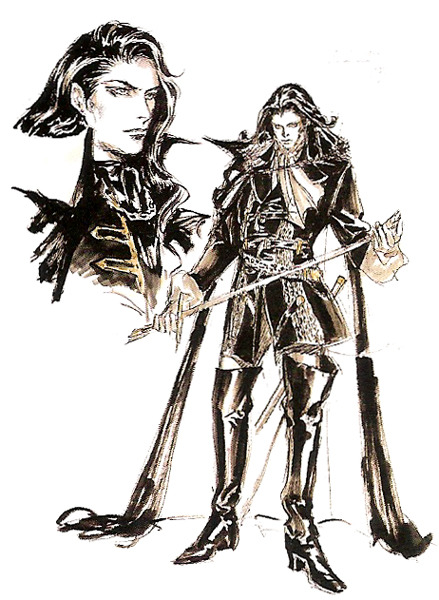
Like, it’s still very different, but...his hair is still black? (Though I’ve also heard headcanons that SoTN Alucard’s hair is only white because of his many decades of blood withdrawal, and he’s naturally black-haired like his dad, which makes so much sense to me I sometimes forget it isn’t canon. Doesn’t help that LoS later went with that exact explanation.)
Speaking of LoS! They did a great job with his design in Mirror of Fate/Lords of Shadow 2, too. Since LoS was far more plot-heavy than Alucard’s prior appearances, his design seemed to be focused on representing different elements of his character/story in visual form. While classic series Alucard was never anything but a dhampir (and one who could easily pass for human if he wanted), Trevorcard was once human. His appearance as a vampire is designed as a clear contrast from his human appearance.
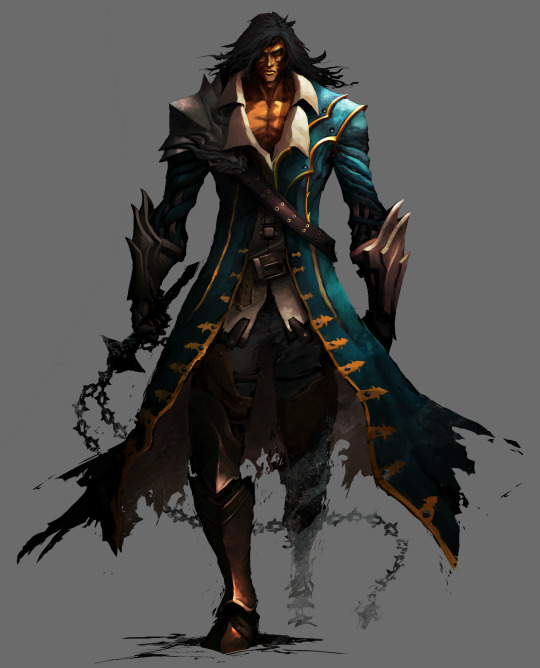
As a human, Trevor’s strong and solid. His skin is tanned and flushed (things caused by sunlight and blood), and his hair is dark. Even the expanse of his chest that’s showing looks muscled and healthy.

As a vampire, all of that is gone. He’s emaciated and skinnier all over, including his prominent newly-obtained claws. His hair is white, and his skin is basically gray. He looks like a corpse, which is exactly what he is. And that’s a big source of angst for him, in the story - the fact that he’s become exactly the kind of hideous monster he’d spent his life hunting. And, unlike his father, he refused to drink blood to remain looking healthy and human. That’s the driving force behind his LoS design - to emphasize the fact that he is a monster now, and he’s got some issues with that fact.
I guess where I’m going with all this is that all of Alucard’s major designs did a good job of being what their individual games needed. I’m not sure if SoTN Alucard was what Netflix CV needed, but it’s the most famous and the fan favorite, so it makes perfect sense that the team would go for it.
107 notes
·
View notes
Text
The new Netflix Castlevania series almost takes itself too seriously. Belmont took three episodes to decide to be likable. But beyond that... Its satisfying me in a way Castlevania hasn't for a long time. It's using the lore from the original series of games, specifically from Castlevania 3 and Symphony of the Night, which is really cool. The animation is pretty good, reminds me of a high budget show from The 90's. Dracula has all of his powers and the personality so I'm digging him. My biggest complaints, I guess, are the monsters aren't varied enough (I didn't see a single skeleton! Is this not Castlevania!?) and that they haven't used any music from the games, which is the s o u l of the series. The show has it's moments of comedy but it's still too straight. It hasn't shown me any of the semi-parodic Japanese inspired gothic horror. I want Trevor and Sypha and Alucard to fight Nazi skeletons in motorcycle sidecars to badass music, ok!? But I'm actually enjoying it way more than I thought I would. None of that awful Lords of Shadow nonsense. I would even go so far to say that I really like it.
19 notes
·
View notes
Text
Castlevania Season 1 review
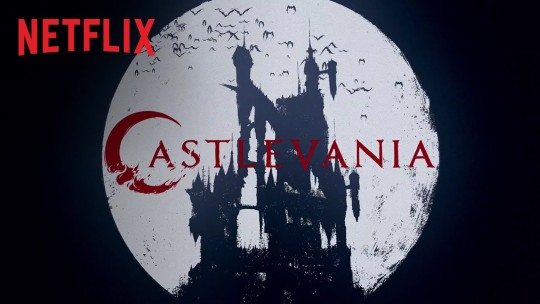
Castlevania is a game franchise I’ve only ever been tangentially interested in. I enjoy the aesthetic and goofy mythos of the series but never played any of the games in depth personally. So the idea of a Castlevania TV series sounded like a prospect with immediate appeal. When I found out Warren Ellis would be the show’s main writer, I was fully prepared to give this show a chance despite the usual dodgy nature of video game adaptations. Within the four-episode first season, the show hasn’t let me down so far…
For the most part.
[Full review under the cut]
This series adapts its story from the framework of Castlevania III, which followed the adventure of Trevor Belmont as the first of the Belmont line to fight against Dracula. Adapting this specific game from the original NES trilogy makes sense since it’s an origin story and has a built in supporting cast from the other playable characters, so there’s more material to use while building an extended narrative. Season 1 focuses on establishing Trevor Belmont’s character and bringing together the central trio who will be the main cast once the show picks up again in season 2, which Netflix announced would be happening the same day season 1 went online.
Castlevania sets up the idea central to the story of season 1 in the first episode that establishes Dracula’s motivation for attacking humanity. Vlad Dracula Tepes is introduced to us as a solitary figure as we see his first meeting with his eventual wife, Lisa. She seeks the knowledge Dracula has in his castle so she can become a better doctor and help people, while also promising to help Dracula care a little more for humanity the way she does. Her goal with Dracula is immediately undone when the powerful vampire learns the bishop of the nearby village has burnt her at the stake as a witch for using the sciences she learned from her husband. Viewing this event as the ultimate example of humanity’s irredeemable nature since the people could have spoken out against their leaders to stop it yet didn’t, Dracula decides he will invoke the hordes of hell and release them across Wallachia. After we see him begin to exact his unholy vengeance, that’s all the Dracula we get in these four episodes, which is a shame since he has a chilling presence about him helped by Graham McTavish’s vocal performance.
It’s after episode 1 that the main arc of these episodes begins as we are introduced to Trevor for the first time and get a quick sense for where he’s at in life. With the Belmonts having been excommunicated from the Church, killed off, and shunned from general society. Trevor’s left as a wandering drunk with no direction in life after everything was taken away from him by the society his family was sworn to protect from the creatures of the night. Personality-wise this makes his general attitude that of a quintessential Warren Ellis protagonist, foul-mouthed, sarcastic, and rude, yet competent and proving himself noble once the situation pushes him into heroism. His arc towards getting to that last point starts from a point where he’s all but given up on helping to save people from the monsters lurking in the night, having grown detached after watching his family be decimated. Basically, he starts out with a similar but not as extreme version of Dracula’s worldview.
He starts to get back on the path of the righteous when he agrees to help a group of Speakers, wandering mystics seeking to help the people hurt by Dracula’s hordes, by protecting them from the people of the village Gesit. The villagers seek to wipe out the Speakers since the Church has mislead them into believing they are responsible for the monsters that attack each night and the Speakers refuse to leave due to their desire to help. It’s by witnessing the Speakers’ refusal to surrender to the world’s perception of them that finally makes Trevor step up and fight to defend them and the village alongside the sorceress Speaker, Sypha.
The story of season 1 ends up being a little sparse once all is said and done. It ends up feeling like the first installment of a straight-to-video series of animated movies that’s been arbitrarily split apart into four parts for the sake of the Netflix format. While we do get a lot of insight into Trevor as a character with season 1, there’s not as much there to define Sypha yet outside of her general attitude and ideals serving as the contrast to Trevor’s that helps get him out of his “Refusal of the Call” phase. The fact that the third member of the main trio, Dracula’s son Alucard, isn’t introduced until the final sequence of the season doesn’t help matters and ultimately has Castlevania season 1 feel like it stops just as it’s getting started.
Voice acting in the show is strong all around. Richard Armitage as Trevor gets the delivery of every snide comment the vampire hunter has up his sleeve across with the perfect affect and when it’s time for the character to step up and get serious, he sells that with a powerful tone of commitment. Alejandra Reynoso plays Sypha as a determined figured in her own right in a way that comes across best when the battles that take up most of the fourth episode are going on. James Callis as Alucard isn’t given much to do but his bemused reactions to Trevor’s irreverence make a nice note for the season to go out on before the trio agree to go forth on their quest to slay Dracula.
The animation of Castlevania comes to us courtesy Frederator Studios and Powerhouse Animation Studios and they’ve put together a strong production overall. The series’ aesthetic mostly takes after that of the games, especially the installments that came along after Symphony of the Night. It’s a strong look that can’t help but feel at least a little anime-like, given this is a Japanese franchise being adapted. The fluidity of the animation is at its most striking during the action sequences, particularly the battles happening in the fourth episode. One focuses on Trevor and Sypha leading townsfolk against the monsters coming to slaughter Gesit and the other is a one-on-one duel between Trevor and Alucard that is hands down one of the best animated fight scenes I’ve ever seen. One point where the design work is a letdown is in the monster designs. Castlevania is a game series with a strong history of varied and distinct monsters to crack the whip at, so it can’t help but be a disappointment that this show mostly defaults to generic giant bat creatures. (Seriously, a Castlevania show where we don’t get to see a single walking skeleton wielding a sword almost feels like a ripoff.) Also, while it’s appropriate that there’d be plenty of blood onscreen in a show about vampires, there are plenty of times where the sheer amount of gore on display feels gratuitous.
Even with these drawbacks, Castlevania season 1 still ends up one of the better video game adaptations there’s ever been thanks to Ellis’s writing, strong performances, and consistent high-quality animation. With season 2 already guaranteed, I’m fine with recommending this season as a way for people to decide whether the show going forwards will be something that appeals to them.
#Castlevania#Castlevania Netflix#Castlevania season 1#Wit's Writing#TV Review#Animation#Warren Ellis#Trevor Belmont#Sypha Belnades#Alucard#Dracula#Frederator Studios#Powerhouse Animation
12 notes
·
View notes
Text
Simon Belmont Joins Super Smash Bros. Ultimate
https://videogameblast.com/?p=1451
Simon Belmont and King K. Rool Join the Fight in Super Smash Bros. Ultimate
Nintendo Switch Exclusive Features More Than 70 Fighters, 100 Stages, 900 Music Tracks and Counting… A legendary vampire hunter and a fan-favorite villain are joining the sprawling cast of the Super Smash Bros. Ultimate game. In a Nintendo Direct video presentation entirely focused on the Nintendo Switch exclusive, it was revealed that Simon Belmont from the Castlevania series and King K. Rool, the main antagonist from the original Donkey Kong Countrygames, are both joining the game as playable fighters. In addition, the Nintendo Direct also shared additional information on Echo fighters, new stages, new modes and one of the most impressive collections of music ever in a single game, with more than 900 music tracks and 28 hours of music. Super Smash Bros. Ultimate launches exclusively for Nintendo Switch on Dec. 7.
“Super Smash Bros. Ultimate is one of the biggest games Nintendo has ever released,” said Doug Bowser, Nintendo of America’s Senior Vice President of Sales and Marketing. “Between all the iconic fighters, stages and music, it’s the largest video game crossover ever produced – and nothing short of a Nintendo fan’s dream come true.”
To view the Nintendo Direct video in its entirety, visit https://www.nintendo.com/nintendo-direct. Some of the highlights revealed in the video include:
Simon Belmont: Simon’s signature weapon is, of course, his whip, with special attacks true to the Castlevania series, including the axe, cross, holy water and Grand Cross Final Smash. His stage is Dracula’s Castle, with candlesticks that release an item when destroyed. Alucard, the tragic hero from Castlevania: Symphony of the Night, appears as an Assist Trophy, lending his cursed steel in battle. Richter Belmont, a descendant of Simon Belmont and the star of his own Castlevania games, also joins the Super Smash Bros. Ultimate roster as an Echo fighter.
King K. Rool: As the beloved villain from all three Donkey Kong Countrygames on Super NES, King K. Rool joins Super Smash Bros. Ultimate as a playable fighter. He attacks with a blunderbuss that can fire cannonballs at opponents, and throws his crown, which acts like a boomerang.
Echo Fighters: Echo fighters in Super Smash Bros. Ultimate have move sets based on other fighters, but a different visual appearance. In addition to Richter Belmont, two other Echo fighters in the game are Chrom from the Fire Emblem series (Echo fighter for Roy) and Dark Samus from the Metroid games (Echo fighter for Samus). Echo fighters can be displayed as separate fighters on the character select screen or stacked on top of the character they are echoing. When stacked, players can change between them with the press of a button. It’s up to players to decide how they want them displayed.
Stages: Returning favorites with new visuals and tweaks will make up most of the stages in Super Smash Bros. Ultimate, but there are new stages in the mix as well. These include Dracula’s Castle from the Castlevania series and New Donk City Hall from the Super Mario Odyssey game. More than 100 stages will be in the game, but because the popular Battlefield and Omega forms can also be selected for each stage, more than 300 total stages are available right from the start! Each stage in the game will also support eight-player battles (additional accessories may be required for multiplayer modes and are sold separately) and feature the ability to turn off hazards like the Yellow Devil in Wily Castle.
Stage Morph: In a Super Smash Bros. first, the Stage Morph option will let players seamlessly transition between two different stages. When you select this option in the rules, one stage will transform into another during battle.
Music: For fans that want it all, My Music lets players select specific music tracks for each stage. Up until now, each stage had its own music track. But in Super Smash Bros. Ultimate, players can select tracks by series. If they are fighting on a stage from The Legend of Zelda, for example, they can select any music track included from that franchise, including new additions like The Legend of Zelda: Breath of the Wild – Main Theme. Counting game music tracks and other music, like in-game menus and other short musical passages, there are approximately 900 compositions – that’s more than 28 hours of video game music! When playing in Handheld mode, music can be played even while the Nintendo Switch screen is turned off, turning the system into its own portable music player.
Items: New items being added to Super Smash Bros. Ultimate include the Banana Gun, Killing Edge, Bomber, Death’s Scythe, Staff, Ramblin’ Evil Mushroom and Rage Blaster, among others from a wide variety of different video game franchises. Items in the game can be picked up and used offensively and defensively in battle.
Pokémon: After players throw a Poké Ball in the game, many new and returning Pokémon may appear to assist in battle. Some of these Pokémon include Abra, Solgaleo, Lunala, Mimikyu and the enormous Alolan Exeggutor.
Assist Trophies: Some of the new Assist Trophies that are joining Super Smash Bros. Ultimate include Zero from the Mega Man X series, Knuckles from Sonic The Hedgehog, Krystal from Star Fox Adventures, Rathalos from the Monster Hunter series, Shovel Knight from, well, Shovel Knightand the evil Moon from The Legend of Zelda: Majora’s Mask.
Classic Mode: The single-player mode in which players battle against a series of fighters will return in Super Smash Bros. Ultimate. Each fighter has a set of stages and opponents that she or he will face.
Stamina Battle: In addition to Time Battle and Stock Battle, Stamina Battle is also one of the standard modes in Super Smash Bros. Ultimate. In Stamina Battle, players fight to deplete each other’s stamina until only one fighter is left standing.
Final Smash Meter: In addition to regular Final Smashes that can be activated after breaking a Smash Ball, the Final Smash Meter is now a selectable option. If enabled, players can charge their Final Smash Meter over the course of a battle. Once the Final Smash Meter is fully charged, players can unleash a less powerful Final Smash attack.
Squad Strike: When playing Squad Strike, players will participate in 5-on-5 or 3-on-3 skirmishes, with each player using either five or three consecutive fighters in one battle.
Tourney Mode: Up to 32 players can participate in Tourney mode, making it great for parties or events with a lot of people. And since Nintendo Switch can be played anywhere, these tournaments can even take place in unexpected places!
Smashdown: After battling in this mode, the previously selected fighters will no longer be available, forcing players to have to pick a different fighter for the next round. This mode favors players who are skilled with multiple fighters and encourages others to diversify their rosters.
Training: The improved Training mode in Super Smash Bros. Ultimateincludes an exclusive stage that features a grid, used to help measure the distance and trajectory of special moves and fighter knockback.
Super Smash Bros. Ultimate launches exclusively for Nintendo Switch on Dec. 7. For more information about the game, visit https://www.smashbros.com/.
Read More:
Top 20 Greatest Anime Games of All Time
Top 30 Recommended Nintendo Switch Games of 2018
0 notes
Text
A legendary vampire hunter and a fan-favourite villain are joining the sprawling cast of Super Smash Bros. Ultimate. In a Nintendo Direct video presentation entirely focused on the Nintendo Switch exclusive, it was revealed that Simon Belmont from the Castlevania series and King K. Rool, the main antagonist from the original Donkey Kong Country games, are both joining the game as playable fighters. In addition, the Nintendo Direct also shared additional information on Echo fighters, new stages, new modes and one of the most impressive collections of music ever in a single game, with over 900 music tracks and 28 hours of music. Super Smash Bros. Ultimate launches exclusively for Nintendo Switch on 7th December.
In addition, starting today fans can also pre-order a special edition of the game, the Super Smash Bros. Ultimate – Limited Edition which includes a copy of the game, a Nintendo GameCube Controller Super Smash Bros.™ edition and a Nintendo GameCube Controller adapter! Fans can also look forward to amiibo of the five newly announced fighters Simon Belmont, Richter Belmont, King K. Rool, Chrom and Dark Samus from the Super Smash Bros. Collection to be released in the future.
To view the Nintendo Direct video in its entirety, visit the Nintendo Direct website. Some of the highlights revealed in the video include:
Simon Belmont: Simon’s signature weapon is, of course, his whip, with special attacks true to the Castlevania series, including the axe, cross, holy water and Grand Cross Final Smash. His stage is Dracula’s Castle, with candlesticks that release an item when destroyed. Alucard, the tragic hero from Castlevania: Symphony of the Night, appears as an Assist Trophy, lending his cursed steel in battle. Richter Belmont, a descendant of Simon Belmont and the star of his own Castlevania games, also joins the Super Smash Bros. Ultimate roster as an Echo fighter.
King K. Rool: As the beloved villain from all three Donkey Kong Country games on Super NES, King K. Rool joinsSuper Smash Bros. Ultimate as a playable fighter. He attacks with a blunderbuss that can fire cannonballs at opponents and throws his crown, which acts like a boomerang.
Echo Fighters: Echo fighters in Super Smash Bros. Ultimate have move sets based on other fighters, but a different visual appearance. In addition to Richter Belmont, two other echo fighters in the game are Chrom from the Fire Emblem series (echo fighter for Roy) and Dark Samus from the Metroid games (echo fighter for Samus). Echo fighters can be displayed as separate fighters on the character select screen or stacked on top of the character they are echoing. When stacked, players can change between them with the press of a button. It’s up to players to decide how they want them displayed.
Stages: Returning favourites with new visuals and tweaks will make up most of the stages in Super Smash Bros. Ultimate, but there are new stages in the mix as well. These include Dracula’s Castle from the Castlevania series and New Donk City Hall from Super Mario Odyssey. More than 100 stages will be in the game, but because the popular Battlefield and Omega forms can also be selected for each stage, more than 300 total stages are available right from the start! Each stage in the game will also support eight-player battles (additional accessories may be required for multiplayer modes; sold separately) and feature the ability to turn off hazards like the Yellow Devil in Wily Castle.
Stage Morph: In a Super Smash Bros. first, the Stage Morph option will let players seamlessly transition between two different stages. When you select this option in the rules, one stage will transform into another during battle.
Music: For fans that want it all, the My Music feature lets players select specific music tracks for each stage. Up until now, each stage had its own music track. But in Super Smash Bros. Ultimate, players can select tracks by series, so as long as they are fighting on a stage from The Legend of Zelda, for example, they can select any music track included from that franchise, including classics like The Legend of Zelda: Breath of the Wild – Main Theme. Counting game music tracks and other music, like in-game menus and other short musical passages there are approximately 900 compositions – that’s more than 28 hours of video game music! When playing in Handheld mode, music can be played even while the Nintendo Switch screen is turned off, turning the system into its own portable music player.
Items: New items being added to Super Smash Bros. Ultimate include the Banana Gun, Killing Edge, Bomber, Death’s Scythe, Staff, Ramblin’ Evil Mushroom and Rage Blaster, among others from a wide variety of different video game franchises. Items in the game can be picked up and used offensively and defensively in battle.
Pokémon: After throwing a Poké Ball in the game, many new and returning Pokémon may appear to assist in battle, including Abra, Solgaleo, Lunala, Mimikyu and the enormous Alolan Exeggutor.
Assist Trophies: Some of the new Assist Trophies that are joining Super Smash Bros. Ultimate include Zero from theMega Man X series, Knuckles from Sonic The Hedgehog, Krystal from Star Fox Adventures, Rathalos from theMonster Hunter series, Shovel Knight from, well, Shovel Knight and the evil Moon from The Legend of Zelda: Majora’s Mask.
Classic Mode: The single-player mode in which players battle against a series of fighters will return in Super Smash Bros. Ultimate. Each fighter has a set of stages and opponents that she or he will face.
Stamina Battle: In addition to Time Battle and Stock Battle, Stamina Battle is also one of the standard modes in Super Smash Bros. Ultimate. In Stamina Battle, players fight to deplete each other’s stamina until only one fighter is left standing.
Final Smash Meter: In addition to regular Final Smashes that can be activated after breaking a Smash Ball, the Final Smash Meter is now a selectable option. If enabled, players can charge their Final Smash Meter over the course of a battle. Once the Final Smash Meter is fully charged, players can unleash a less powerful Final Smash attack.
Squad Strike: When playing Squad Strike, players will participate in 5-on-5 or 3-on-3 skirmishes, with each player using either five or three consecutive fighters in one battle.
Tourney Mode: Up to 32 players can participate in Tourney mode, making it great for parties or events with a lot of people. And since Nintendo Switch can be played anywhere, these tournaments can even take place in unexpected places!
Smashdown: After battling in this mode, the previously selected fighters will no longer be available, forcing players to have to pick a different fighter for the next round. This mode favours players who are skilled with multiple fighters and encourages others to diversify their rosters.
Training: The improved Training mode in Super Smash Bros. Ultimate includes an exclusive stage that features a grid, used to help measure the distance and trajectory of special moves and fighter knockback.
Super Smash Bros. Ultimate launches exclusively for Nintendo Switch on 7th December. For more information about the game, visit https://www.smashbros.com/.
What Just Happened On The Latest Super Smash Bros. Ultimate Nintendo Direct A legendary vampire hunter and a fan-favourite villain are joining the sprawling cast of Super Smash Bros.
0 notes